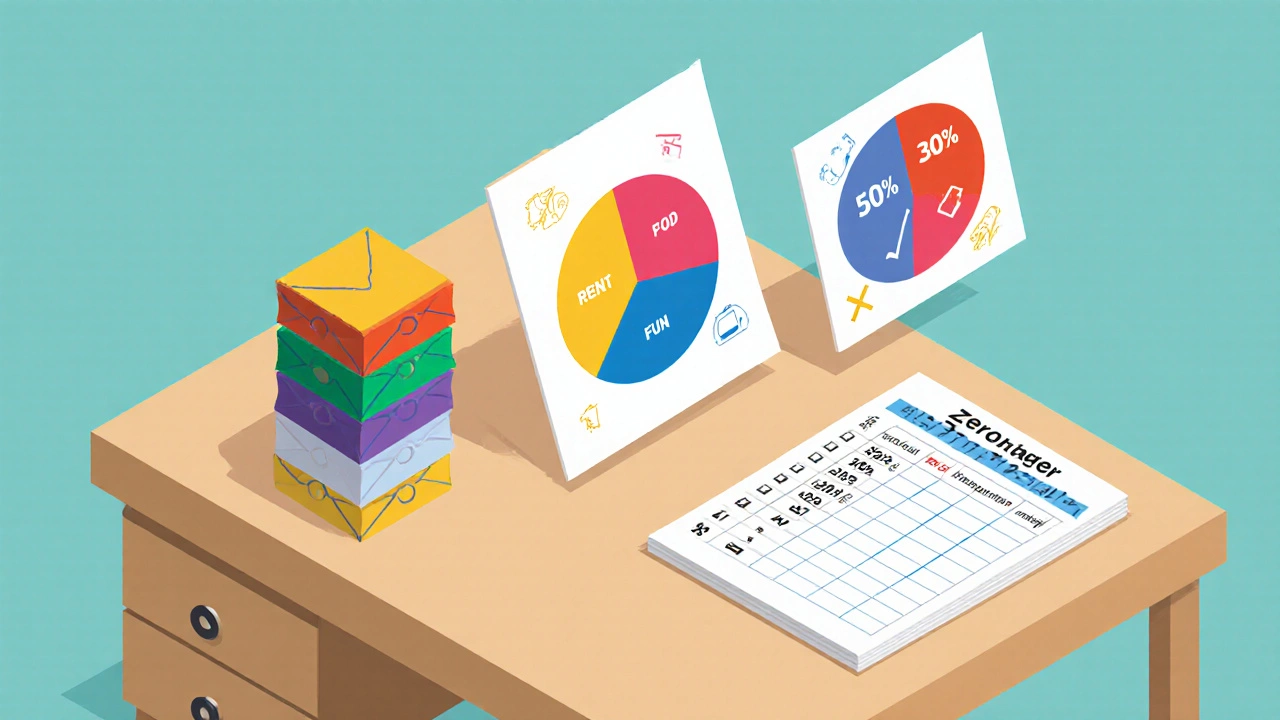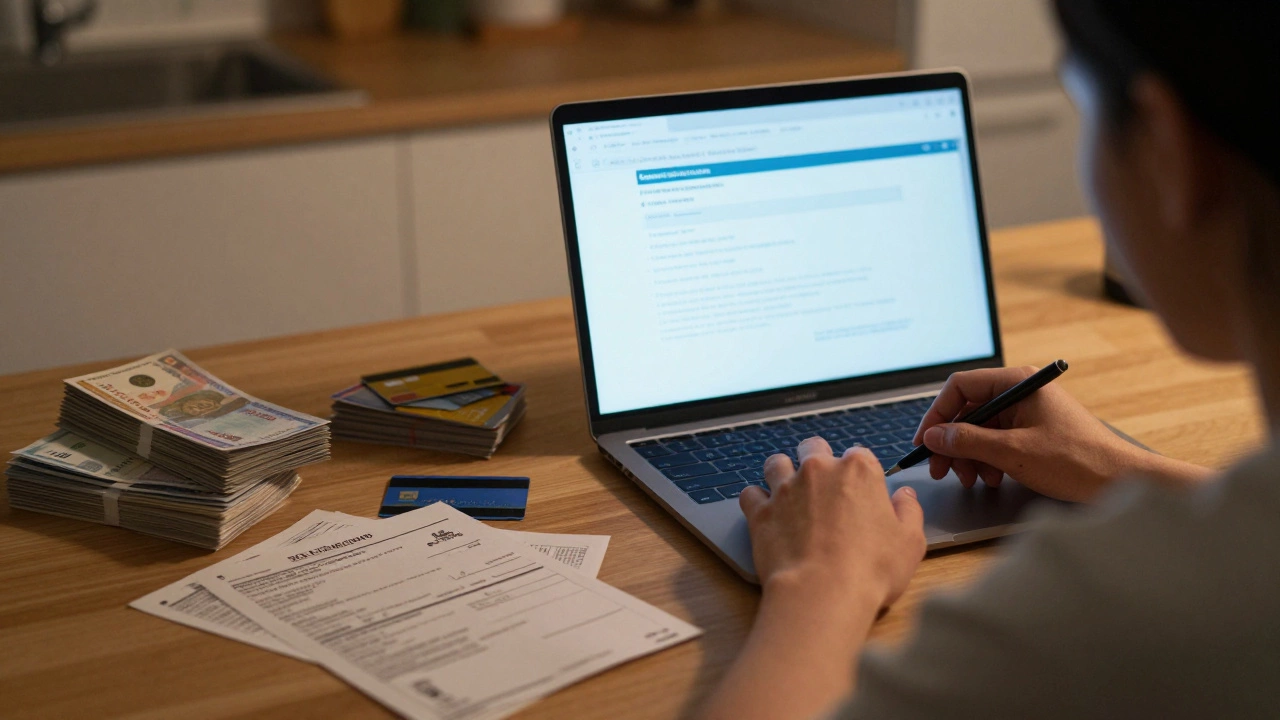50/30/20 Budget Calculator
Calculate Your Budget Allocation
Ready to stop wondering where all your money disappears each month? budgeting for beginners doesn’t have to be a math class or a painful spreadsheet marathon. In this guide we’ll walk you through a straightforward plan that anyone can start today, no matter how chaotic your cash flow feels.
What is Budgeting, Really?
Budgeting is the process of creating a plan to allocate your income toward expenses, savings, and debt repayment. Think of it as a roadmap for every dollar you earn.
Why Beginners Should Keep It Simple
When you’re just starting out, complexity is the enemy of consistency. A simple system lowers the mental load, reduces the chance of error, and builds the habit of checking in on your money every week.
Step 1: Capture Your Income
Write down every source of cash that lands in your bank account-salary, side‑gig earnings, freelance invoices, even occasional cash gifts. Use a Personal Budget a customized plan that reflects your unique income and expense profile template to keep it tidy.
- Monthly salary after tax
- Regular overtime or bonus averages
- Part‑time or freelance cash flow
- Any passive income (rental, dividends)
Step 2: List Fixed Expenses
These are costs that stay the same each month-rent or mortgage, utilities, insurance, loan payments, and subscription services. Pull recent bank statements and jot each line item into a column titled “Fixed.”

Step 3: Spot Variable Costs
Variable costs fluctuate: groceries, gas, dining out, entertainment, clothing. Review at least three months of statements to spot the average spend. If you see spikes, note the triggers (e.g., holiday parties, travel).
Step 4: Choose a Budgeting Method
Here’s where you decide how to slice your money. Below is a quick comparison of three beginner‑friendly approaches.
| Method | Core Idea | Best For | Typical Allocation |
|---|---|---|---|
| Envelope System A cash‑based method where you place allotted money into physical envelopes per category | Spend only what’s in each envelope. | People who prefer tangible limits. | Custom per category; often 40‑60% of income. |
| 50/30/20 Rule A percentage‑based framework dividing net income into needs, wants, and savings | 50% needs, 30% wants, 20% savings/debt. | Those who like a quick, rule‑of‑thumb guide. | Needs = 50%, Wants = 30%, Savings = 20%. |
| Zero‑Based Budgeting Every dollar is assigned a job, leaving zero unallocated at month‑end | Income ‑ expenses = $0. | Detail‑oriented savers who track every cent. | All income allocated; categories vary. |
If you’re unsure, start with the 50/30/20 rule-it’s simple, yet flexible enough to evolve into the envelope or zero‑based method later.
Step 5: Set Financial Goals and Build an Emergency Fund
Short‑term goals (<12 months) might include paying off a credit‑card or saving for a vacation. Long‑term goals cover a down‑payment, retirement, or education funds. Before diving into goals, seed an emergency fund: aim for three to six months of essential expenses in a high‑interest savings account.

Step 6: Track Every Transaction
Choose a tool that matches your comfort level. A popular Expense Tracking App mobile software that automatically categorizes purchases from linked bank accounts like YNAB, Mint, or PocketGuard can save you time. If you love spreadsheets, download a Spreadsheet Template a pre‑formatted Google Sheets or Excel file designed for budgeting and fill in each expense daily.
- Record each purchase as it happens.
- Reconcile weekly with your bank statement.
- Adjust categories if you consistently overspend.
Consistent tracking creates awareness, which is the real engine of better money habits.
Pro Tips & Common Pitfalls
- Automation wins. Set up automatic transfers to your savings or investment accounts right after payday.
- Don’t forget irregular expenses. Car maintenance, annual subscriptions, and holiday gifts should be broken into monthly “savings buckets.”
- Stay flexible. If a method feels too restrictive, tweak the percentages or envelope sizes rather than abandoning the whole system.
- Avoid “budget creep.” When income rises, increase savings first before expanding discretionary spend.
Quick Beginner Budget Checklist
- Calculate total net monthly income.
- List all fixed expenses.
- Estimate average variable costs.
- Pick a budgeting method (Envelope, 50/30/20, Zero‑Based).
- Set up an emergency fund target.
- Choose a tracking tool (app or spreadsheet).
- Review and adjust weekly.
Frequently Asked Questions
How much of my income should I allocate to savings?
A solid starting point is the 20% slice from the 50/30/20 rule. If you have high‑interest debt, aim to split that 20% between debt payoff and an emergency fund until the debt is cleared.
Can I use the envelope system if I mostly pay with cards?
Yes. Many banks let you create “digital envelopes” by assigning budget categories to your debit card. You can also withdraw a set amount of cash each week for discretionary spending.
What’s the best app for a beginner?
Mint is free and user‑friendly, automatically imports transactions, and gives quick visual breakdowns. YNAB (You Need a Budget) offers more hands‑on control but carries a modest subscription fee.
How often should I revisit my budget?
At minimum once a month, but a quick weekly check‑in helps catch overspending early and keeps you on track.
Do I need a separate budget for emergencies?
Treat the emergency fund as its own category. Allocate a fixed amount each paycheck until you reach the three‑to‑six‑month safety net, then shift that money into regular savings or investments.
Start with these steps, stay consistent, and you’ll soon see the stress melt away as your money works for you instead of the other way around.








